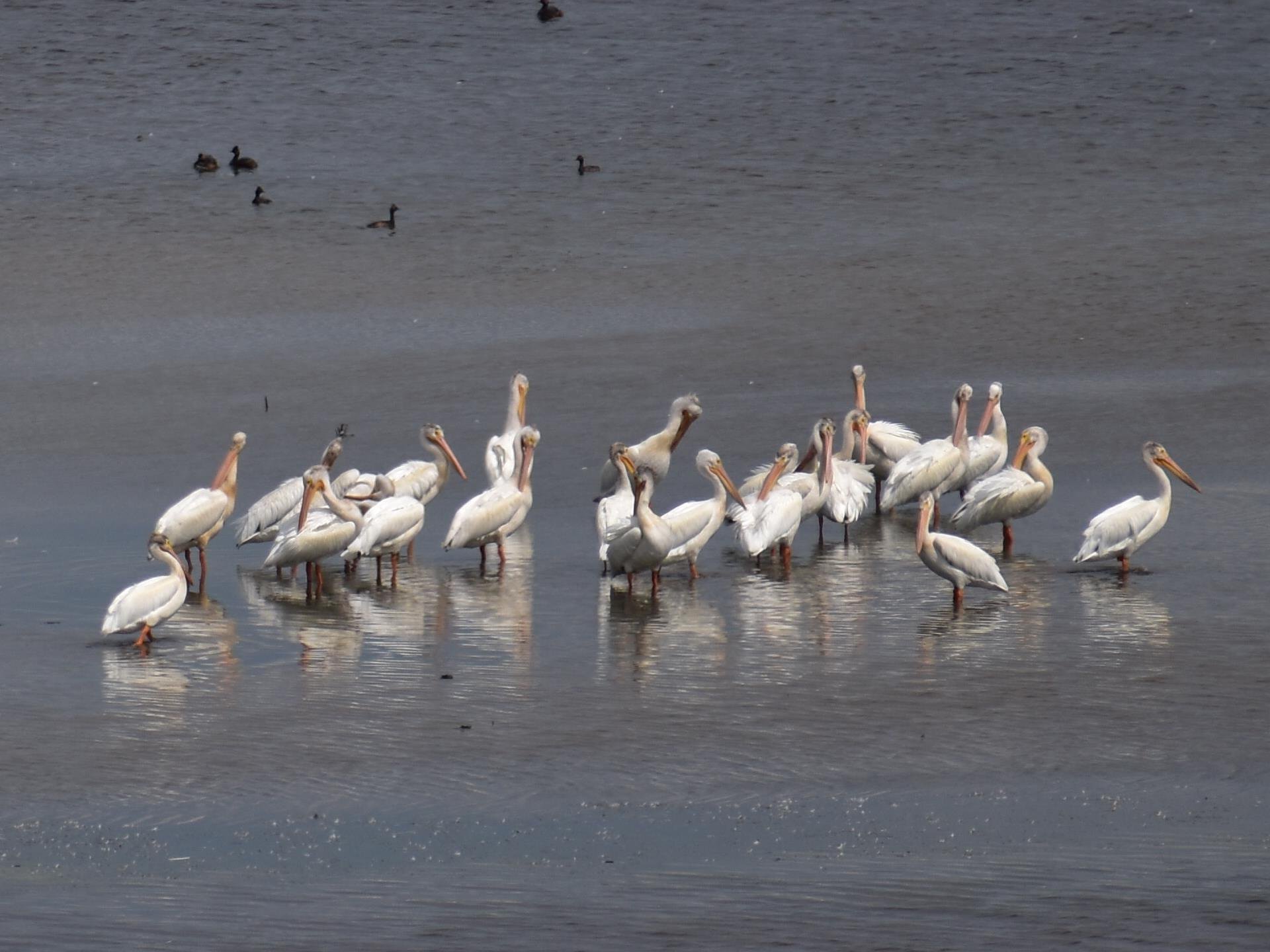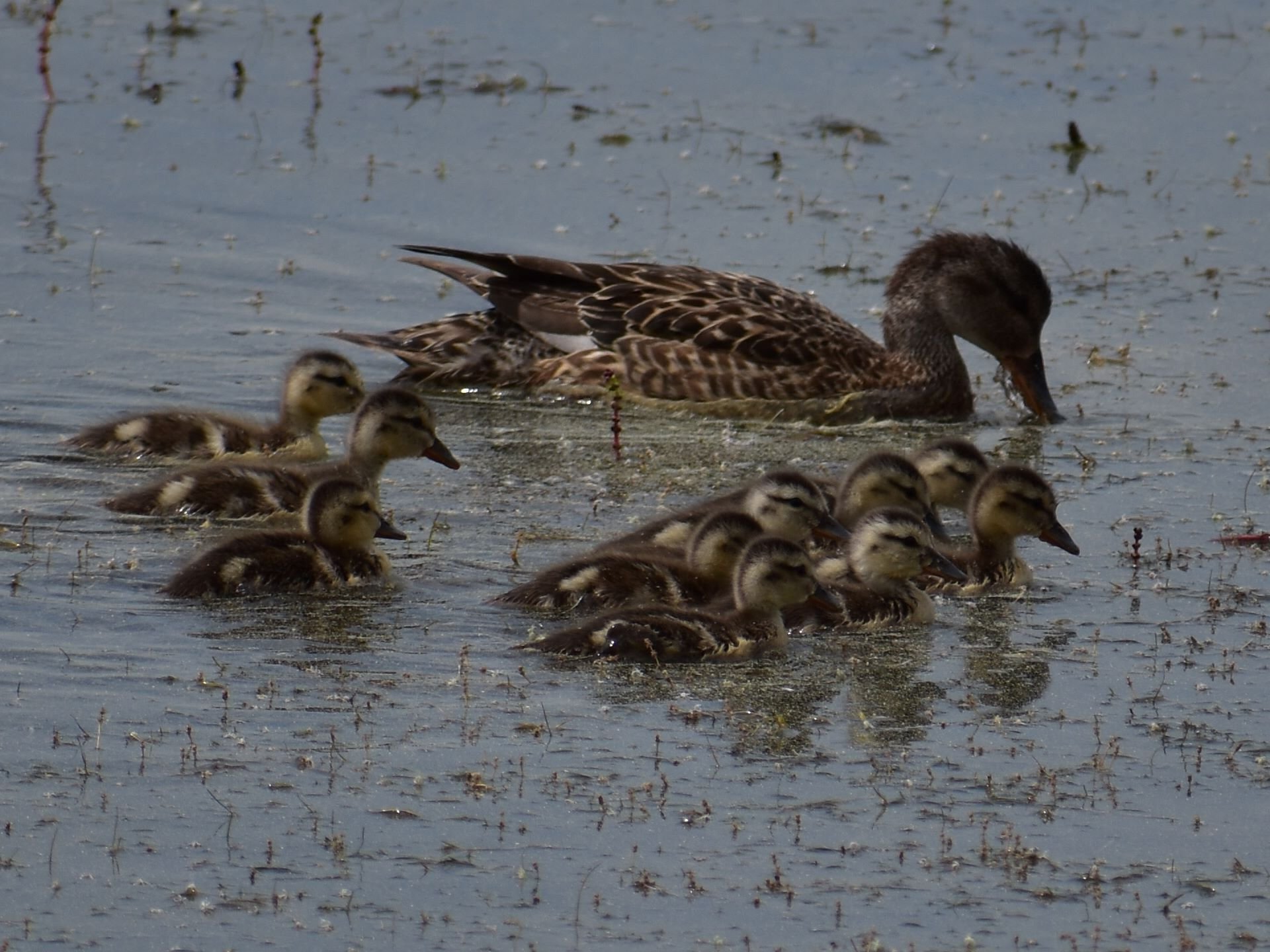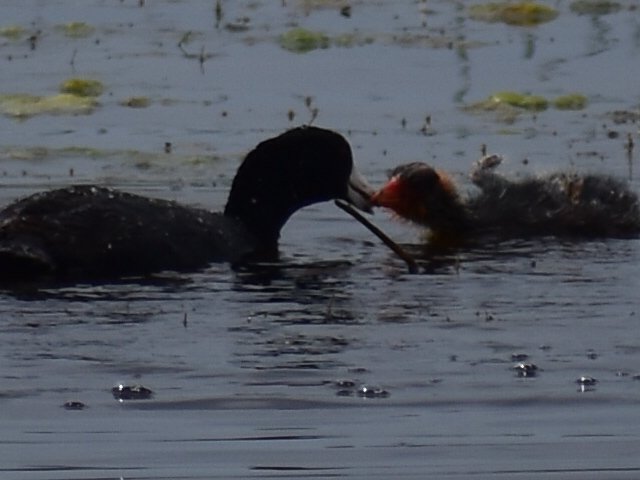Discover a unique wildlife and birding preserve in a pristine environment
By Keely López
Arapaho National Wildlife Refuge Manager
There is a large National Wildlife Refuge in Northern Colorado that is only 3 hours and 15 minutes from Boulder that offers birders, nature enthusiasts and photographers a wealth of opportunity to experience an untouched and uncrowded environment. The Refuge is in Jackson County which is the fourth largest county in Colorado (1,621 square miles) with a total population of 1,309 (2023). The “gem” of Jackson County is Arapaho National Wildlife Refuge (NWR).
Curious female Greater Sage-grouse in the reeds at Arapaho National Wildlife Refuge. Photo by Gary Andrews.
Arapaho National Wildlife Refuge (NWR) was established in 1967 primarily to provide suitable nesting, rearing and stopover habitat for migratory birds. The 25,521-acre refuge is in an intermountain glacial basin just 10 miles south of Walden, Colorado. This area is commonly called North Park. The basin is 8,100 - 8,700 feet in elevation making Arapaho NWR one of the highest refuges in the US. This refuge provides habitat for a variety of wildlife species, including at least 208 species of birds, 37 species of mammals, 6 species of reptiles and 10 species of fish. Arapaho NWR consists of four diverse habitat types; wetlands (habitat for migratory birds), irrigated meadows (nesting for waterfowl and Greater Sage-Grouse, Sora and Virginia Rails), riparian (Yellow Warbler, sparrows), and uplands (hawks, falcons, Bald Eagles and Golden Eagles). Other wildlife species such as the many local ungulates (moose, elk, mule deer and pronghorn), as well as white-tailed prairie dogs, white-tailed jackrabbits, badgers, long-tailed weasels, red fox and coyotes, also share these habitats with birds.
For birders, Arapaho NWR provides a large selection of species and is especially a treat in the spring and fall for migratory species. Since the late 1800s, North Park has been known for high waterfowl productivity, and Arapaho NWR continues to provide crucial breeding habitat. The habitats that Arapaho NWR provides help make North Park one of the most productive waterfowl areas in Colorado. Waterfowl nesting starts in April and proceeds through August, then the migration south begins. Many species of shorebirds breed at Arapaho NWR and many more pass through refuge habitats during migration.
American Avocets at Arapaho NWR. Photo by Gary Andrews.
Arapaho NWR provides choices for optimal bird and mammal viewing in four different habitats. The place to start is the Visitor Center which has wildlife exhibits, maps, restrooms and helpful knowledgeable staff. From there, you can drive to Owl Ridge with the best view of the Illinois River and the wetlands. Next is the Moose-Goose interpretive 1/2-mile nature trail where you will find wildflowers, birds and an occasional moose. Then it is highly recommended to drive our “birding gem”; the six-mile Auto Tour Route which takes you through the heart of the wetlands and ponds to view waterfowl and migratory birds. There is also a “back road” for the adventurous that will take you back to Walden by going along the Illinois River through all the habitats. This “back road” starts at the Visitor Center and ends at Hwy 14 east of Walden and is about 6 miles long and is suitable for 2-wheel drive vehicles. You can explore all these locations before your trip in our interactive map online.
Using ebird data for 2023 and 2024 and comparing Boulder County to Arapaho NWR shows that the following species are either seen only in Arapaho NWR or are seen more frequently: Greater Sage-Grouse, Sage Thrasher, Sagebrush Sparrow, Golden Eagle, Swainson’s Hawk, Peregrine Falcon, Prairie Falcon, Short-eared Owl, Forster’s Tern, Sora, Black-crowned Night Heron, White-faced Ibis, Marsh Wren, Yellow-headed Blackbird and Calliope Hummingbird. It is important to remember many birds that you might see in Boulder County are nesting in Arapaho NWR which offers new opportunities that you may have not seen before.
American Coot with two juveniles at Arapahoe NWR. Photo by Gary Andrews.
Since there is so much to see, we suggest you plan to stay over at least one night. Walden provides motels, cabins, restaurants and a full grocery store. The North Park (Walden) Chamber of Commerce website can help with choices.
There are also many camping choices within 25 miles of Arapaho which include Colorado State Forest State Park, BLM and USFS property and private RV Parks. State Forest State Park alone offers 170 developed sites in five different locations as well as primitive sites throughout the park. Developed sites can accommodate tents, trailers/RVs and pick-up campers. There are 32 electric sites with water at Ranger Lakes and 29 at North Park. Other popular campgrounds with water are Michigan Lake and Bockman. There are also cabins at Michigan Lake.
The best times to visit Arapaho NWR are spring, summer and fall. In winter, the roads can become inaccessible (usually November / December – March / April). Spring begins the Greater Sage-grouse breeding and early migration and nesting of waterfowl and raptors which continues through the summer. Fall begins the transition from nesting to migration of different birds going south.
Arapaho NWR is a special treat for all. We frequently get birders and birding groups who are thrilled at the diversity of not only birds but also wildlife. There is something for everyone of all ages. Bring your binoculars, spotting scopes and be prepared to stay and enjoy. Arapaho NWR is free for everyone. We hope to see you soon!
To see what we are currently seeing, check our Facebook page. You can also explore what birds have been seen on the Arapaho National Wildlife Refuge’s eBird page.










